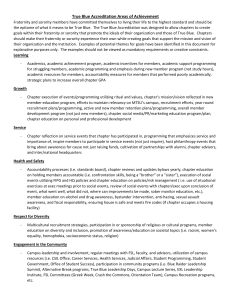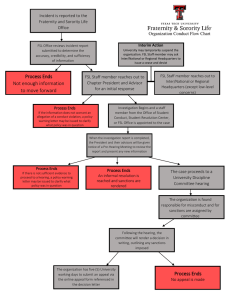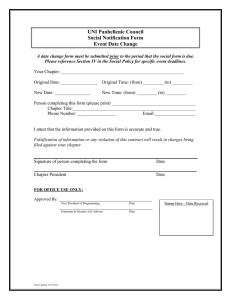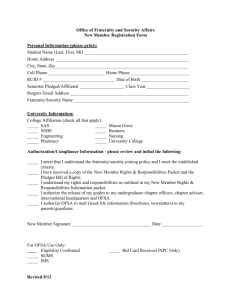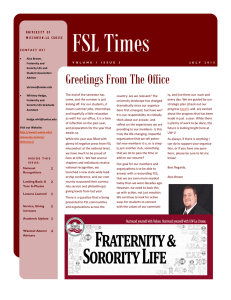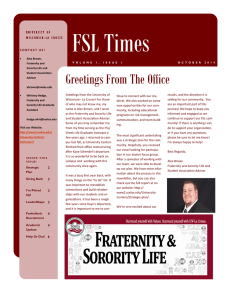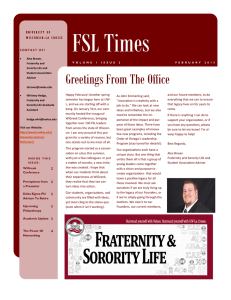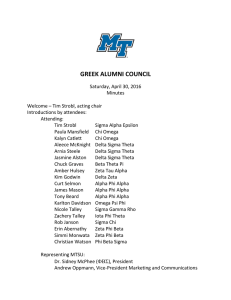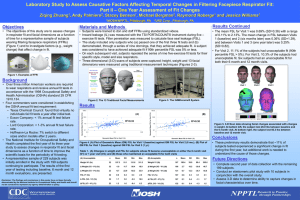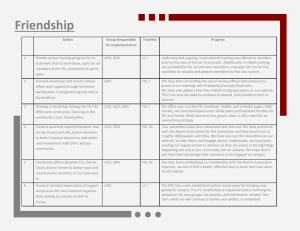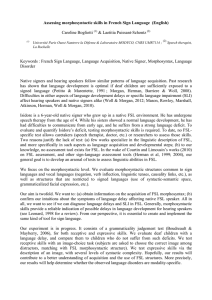2014-17 Fraternity and Sorority Life Strategic Plan Executive Summary
advertisement
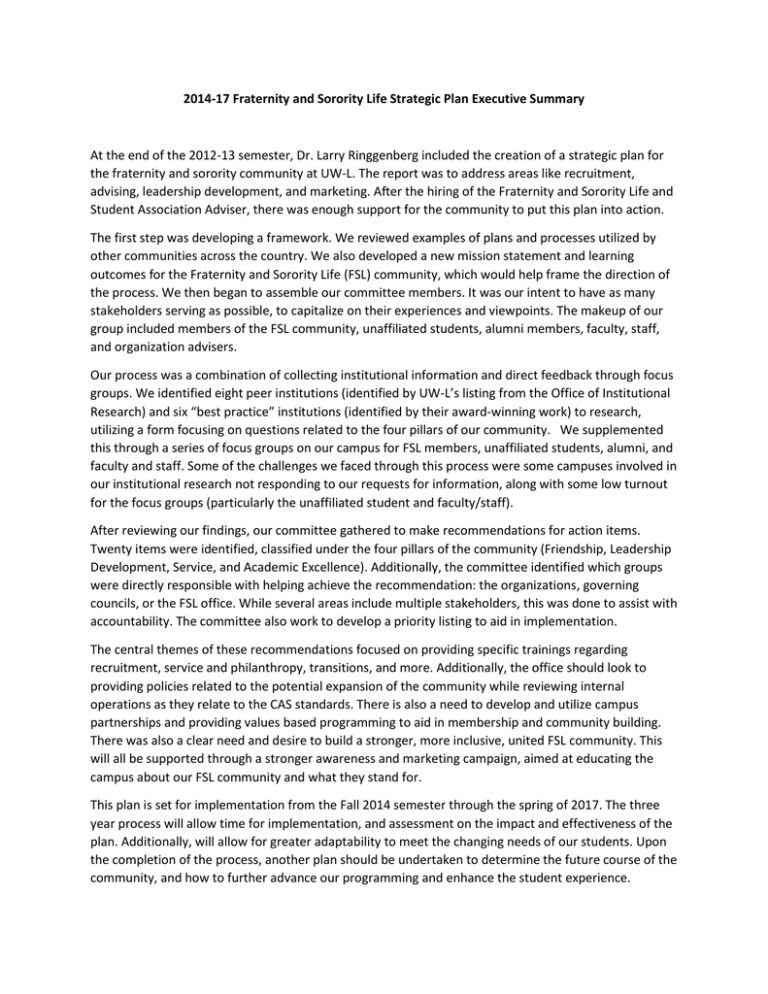
2014-17 Fraternity and Sorority Life Strategic Plan Executive Summary At the end of the 2012-13 semester, Dr. Larry Ringgenberg included the creation of a strategic plan for the fraternity and sorority community at UW-L. The report was to address areas like recruitment, advising, leadership development, and marketing. After the hiring of the Fraternity and Sorority Life and Student Association Adviser, there was enough support for the community to put this plan into action. The first step was developing a framework. We reviewed examples of plans and processes utilized by other communities across the country. We also developed a new mission statement and learning outcomes for the Fraternity and Sorority Life (FSL) community, which would help frame the direction of the process. We then began to assemble our committee members. It was our intent to have as many stakeholders serving as possible, to capitalize on their experiences and viewpoints. The makeup of our group included members of the FSL community, unaffiliated students, alumni members, faculty, staff, and organization advisers. Our process was a combination of collecting institutional information and direct feedback through focus groups. We identified eight peer institutions (identified by UW-L’s listing from the Office of Institutional Research) and six “best practice” institutions (identified by their award-winning work) to research, utilizing a form focusing on questions related to the four pillars of our community. We supplemented this through a series of focus groups on our campus for FSL members, unaffiliated students, alumni, and faculty and staff. Some of the challenges we faced through this process were some campuses involved in our institutional research not responding to our requests for information, along with some low turnout for the focus groups (particularly the unaffiliated student and faculty/staff). After reviewing our findings, our committee gathered to make recommendations for action items. Twenty items were identified, classified under the four pillars of the community (Friendship, Leadership Development, Service, and Academic Excellence). Additionally, the committee identified which groups were directly responsible with helping achieve the recommendation: the organizations, governing councils, or the FSL office. While several areas include multiple stakeholders, this was done to assist with accountability. The committee also work to develop a priority listing to aid in implementation. The central themes of these recommendations focused on providing specific trainings regarding recruitment, service and philanthropy, transitions, and more. Additionally, the office should look to providing policies related to the potential expansion of the community while reviewing internal operations as they relate to the CAS standards. There is also a need to develop and utilize campus partnerships and providing values based programming to aid in membership and community building. There was also a clear need and desire to build a stronger, more inclusive, united FSL community. This will all be supported through a stronger awareness and marketing campaign, aimed at educating the campus about our FSL community and what they stand for. This plan is set for implementation from the Fall 2014 semester through the spring of 2017. The three year process will allow time for implementation, and assessment on the impact and effectiveness of the plan. Additionally, will allow for greater adaptability to meet the changing needs of our students. Upon the completion of the process, another plan should be undertaken to determine the future course of the community, and how to further advance our programming and enhance the student experience.
